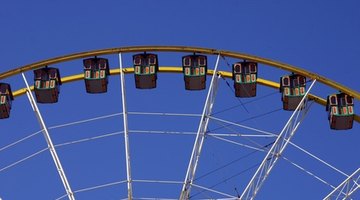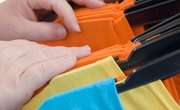Circus performances require motions and movements that are highly physics based. You can use a circus theme to demonstrate some of the physics involved in both the everyday world and in circus events. These activities will excite students and keep their attention.
The Science of the Trapeze
Students can learn how the trapeze works by trying out a simple experiment. Each student will need a small pail, twine and a few stones. Begin by attaching the twine to the handle of the pail. Instruct the student to swing the pail by the twine to see what it feels like. Then, fill the pail with the stones. Instruct the student to swing the pail by the twine again. Since the pail is heavier, the student will be able to see how a trapeze artist can fly through the air at a circus.
The Science of the Russian Swing
Russian swing artists at a circus seem to defy gravity. You can demonstrate how these circus performers do their tricks by creating an experiment that uses centrifugal force. Cut the top off of a pint milk carton, and discard it. Fill the bottom of the milk carton with dried beans. Poke holes in all four sides of the carton. String twine through each of the holes, and then connect the four pieces of twine together. Attach a piece of twine to the top of the four connected pieces. String the twine through a spool, and then attach the string onto a roll of masking tape. Hold onto the spool, and then spin the roll of tape around and around. The centrifugal force will cause the carton of beans to rise upward as if by magic.
The Science of Juggling
When clowns juggle at the circus, it can seem almost impossible to imagine how to juggle yourself. You can show students how they can juggle by teaching them the science of juggling. Start by holding two balls in your left hand, and one ball in your right hand. Toss the outside ball in your left hand into the air, leaning it toward the right hand. While the ball is in the air, toss the ball in your right hand into the air, leaning it toward the left hand. While both balls are still in the air, toss the last ball in your left hand into the air toward your right hand. As the first ball hits your right hand, immediately toss it again toward the left hand. As the second ball hits your left hand, immediately toss it toward your right hand. Continue tossing the balls in this pattern as you juggle the balls.
Related Articles
References











